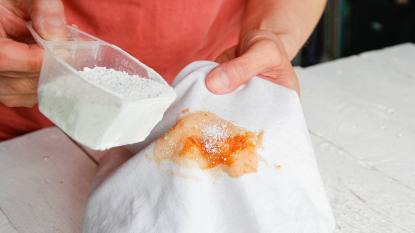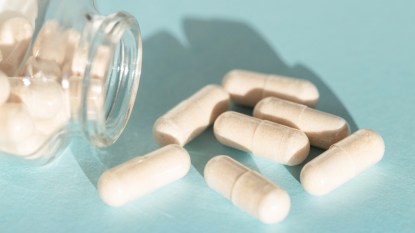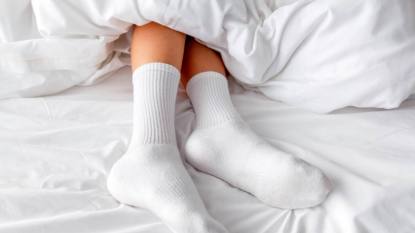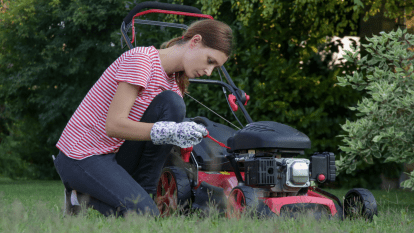How to Lower the Humidity in Your House With Ease on Your Own According to Experts
Plus, experts share how to tell if your home is too damp from moisture and what you can do about it

High levels of humidity in your home can cause everything from musty, bad smells, and mold allergies to damage to carpeting, wood flooring and even — in severe cases — structural areas of your home. This may sound concerning, but there are ways to lower the humidity in your house with ease on your own, experts share with FIRST for Women.
While it’s not usually that serious for most of us, having a damp, musty home just isn’t fun. Ideally, humidity levels in the home should be about 35 to 45% in summer and 30 to 40% in winter. Anything much higher than those numbers and you’re going to want to know how to lower the humidity in your house.
”Today’s super-insulated homes are great at conserving energy, but they’re so tightly buttoned-up that they don’t breathe, which traps moisture from all sorts of household activities, ranging from boiling water and taking hot showers, to running the clothes dryer and even exhaling!” says Joseph Truini, an author and home-improvement expert who hosts the YouTube channel, Joe Shows How, which provides tips, tricks, and practical advice for DIY homeowners.
How to know if you need to lower the humidity in your house
Besides being aware of the moist air, you can tell your home is too damp if you notice condensation on your windows in winter or on cold surfaces in summer. You can also measure humidity in your home with a simple hygrometer. If you find it’s high, there are several things you can do to lower your home’s humidity level — whether it’s in just one area — think a closet or your basement — or the whole house.
This YouTube video from Mike Holmes Inspections explains why your house holds humidity:
How to lower the humidity in your house
1. Increase air-flow inside to decrease humidity inside your home
Keeping your home closed up means that any moisture that’s already trapped inside has a good chance of staying there. Increasing air-flow within your house is as easy as opening windows (when your AC is not in use) and doors within your home and using ceiling and other fans inside to get air moving and create a cross breeze. “Using any sort of fan to increase ventilation is highly recommended,” says Truini because the fresh air helps to move moisture out of the house. The United States Environmental Protection Agency also recommends moving furniture away from walls to further increase air flow.
2. Minimize kitchen, bath, and laundry room moisture to lower home humidity
Another way to reduce relative moisture in your home is to run your stove’s exhaust fan anytime you’re cooking and cover pots that are boiling. You’ll want to run the exhaust fan while you’re showering, too, and avoid using appliances that add more heat to the air. That’s because all of these things raise the temperature in the room, thus allowing the air to hold more water molecules. But running the exhaust fan will carry the hot, moisture-laden air out of your home. “And leave the fan running at least 10 minutes after turning off the shower,” says Truini. “Also check to make sure the fan’s duct runs all the way to the outdoors, and it isn’t just dumping hot, moist air into the attic or other enclosed space.” Other small things you can do include taking cooler showers, line-drying clothing and cooking outside or opting for take-out when it’s hot.
This video mentions using vent fans in bathrooms and kitchens to control humidity:
https://www.youtube.com/watch?app=desktop&v=qrjiAqYDj-8
3. Seal up openings that allow moisture in to help combat humidity
Things like plumbing issues, a damp crawl space, inadequate insulation, condensation issues on windows, lack of a sump pump (if one is needed) and gutter down-spouts that don’t properly take water away from your home can all be causes of excess humidity inside the home. Truini recommends laying a plastic vapor barrier over bare soil in crawl spaces to prevent moisture from coming in, using caulk, epoxy or hydraulic cement to seal up cracks or holes around the home, making sure downspouts are carrying rainwater well away from the house to prevent water from penetrating through the foundation, fixing any size plumbing leak right away and replacing damaged weather-stripping around windows and exterior doors in order to prevent humid air from coming in. “Also check your clothes dryer to confirm that the exhaust duct is firmly attached to the rear of the dryer and is not leaking hot-moisture air into the room,” says Truini.
This video from Crawl Space Ninja includes tips for sealing up openings in your house:
4. Use charcoal moisture absorbers to lower humidity in your home
For smaller damp areas, charcoal briquets or even baking soda can help, says Truini. That’s because both substances are incredibly absorbent and will work naturally to remove moisture in smaller areas. “Placing open containers of charcoal briquets or baking soda around the house will absorb moisture (and odors, too) from the air, but they are not going to dramatically reduce the RH in a home,” says Truini. “This technique is most effective in small, enclosed spaces, such as a closet or pantry.” Another option for confined spaces, he says, is to use Damp Rid.
Related: 16 Brilliant Uses for Baking Soda That Will Save You Time and Money
This video from Biological Stuff shows using charcoal reduces humidity in house:
5. Don’t put carpet over concrete flooring in order to avoid humidity
According to the EPA, carpeting laid directly over a concrete floor will absorb moisture and could potentially allow “biological pollutants” like mold. That’s why our basements can often smell moldy. The EPA recommends using area rugs over concrete instead or putting down a vapor barrier and sub-flooring first if you plan to use carpeting over a concrete floor.
See this video on how to install a vapor barrier over a concrete floor:
6. Run a dehumidifier to help with humidity in your house
Using a dehumidifier — whether it’s an individual unit in a room or a whole-house one — will help keep moisture out of your home. Dehumidifiers work by taking warm, moist air from an area and cooling it, which then allows the water to become liquid again and drip into a collection bucket. “Using a dehumidifier will help keep humidity levels low,” says Giovanni Loaiza of Bell Mechanical, LLC. in Mahopac, NY. “But remember,” he says, “too little humidity can be as problematic as too much.” Having too little humidity can cause damage to flooring, furniture and window panes. That’s why it’s important to measure the humidity in your home.
7. Run your air conditioning unit to bring down humidity levels at home
One of the best ways to keep the proper level of moisture in a home is to run an air conditioning unit. Air conditioners work by taking the warm air inside a home and transferring it outside. The warm air is blown over an evaporator coil and cooled, which removes much of the moisture from the air. “The best approach is to maintain a constant temperature with your AC,” says Loaiza. “It is also imperative to make sure you change the AC filter frequently to maximize airflow.”
This YouTube video from Everyday Workbench shows several ways to reduce humidity in your house:
For more home tips, click through the links below!
The Best Time to Water Grass + The Simple Signs It Needs More
What Temperature Should a Refrigerator Be? Pros Reveal the Ideal Number That Saves You Money
Does Lowering the Thermostat Really Save Money? Plus the Freebie That Shrinks Your Heating Bill













